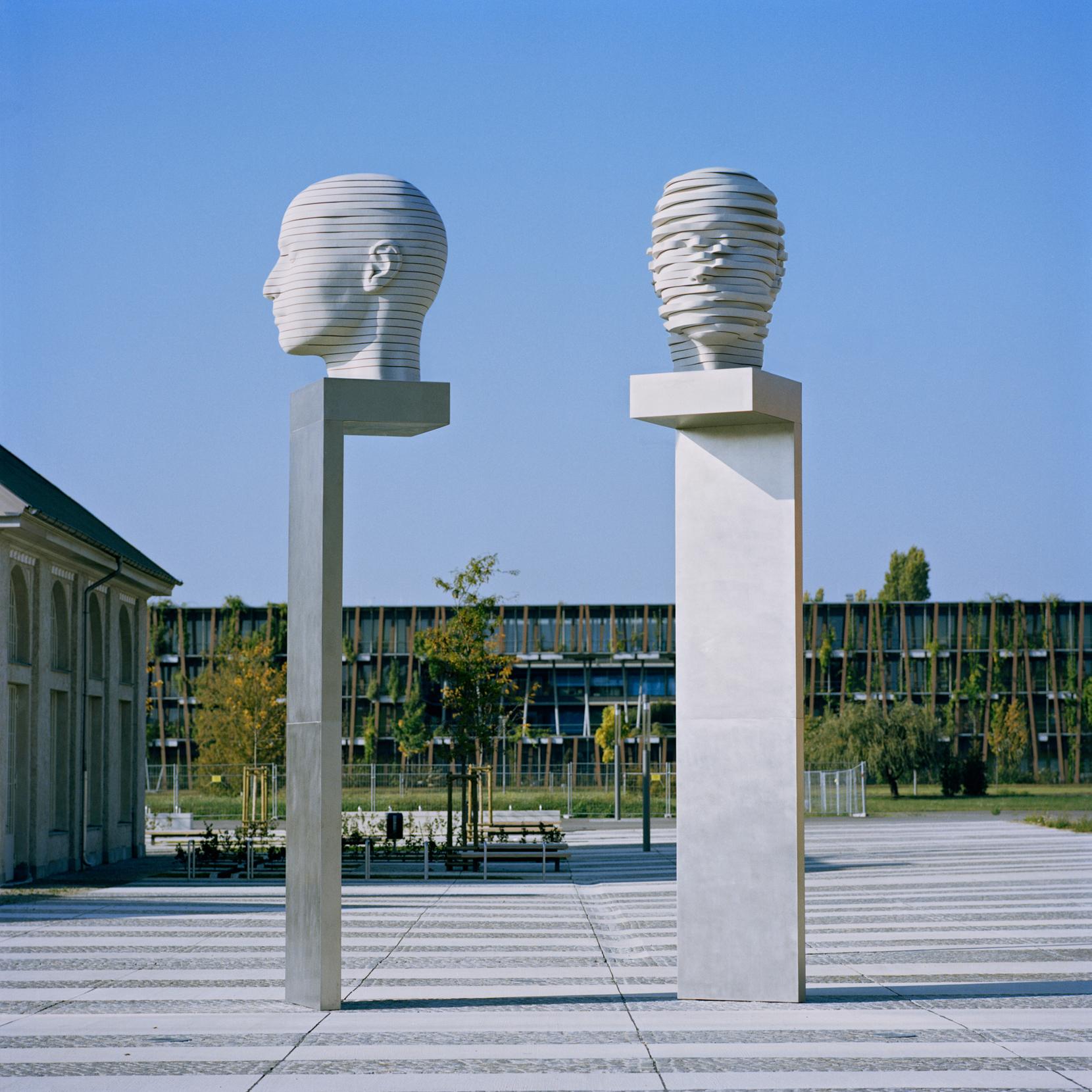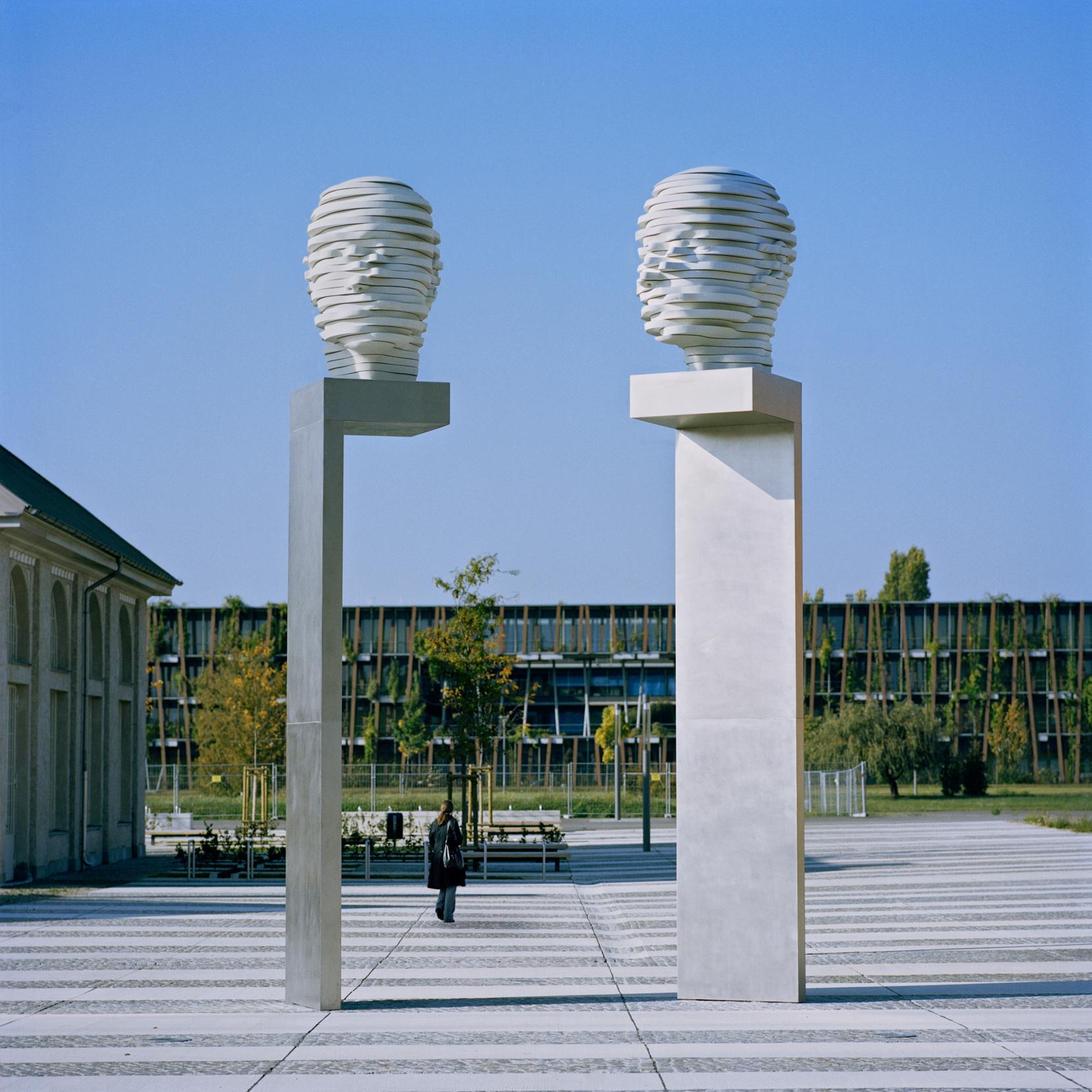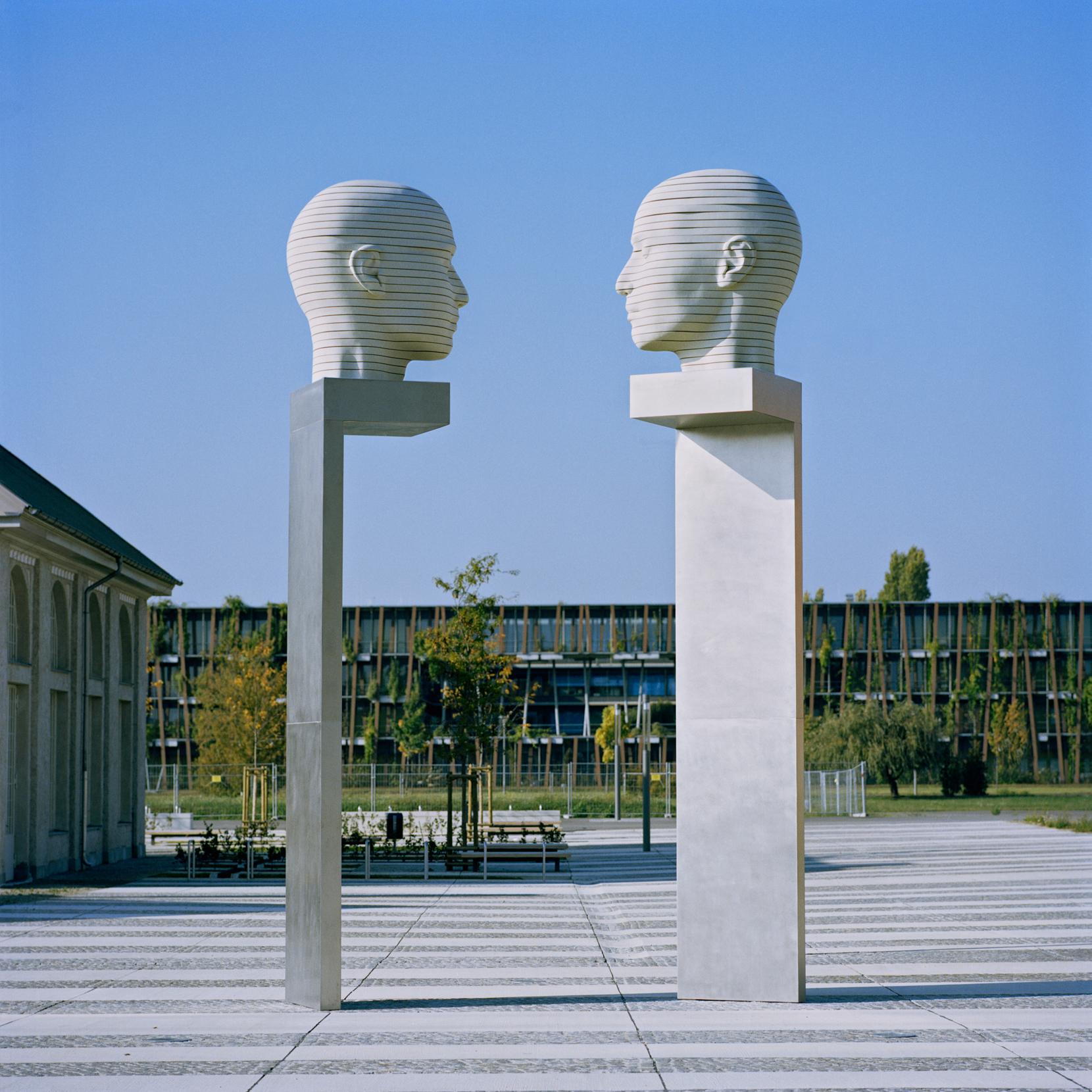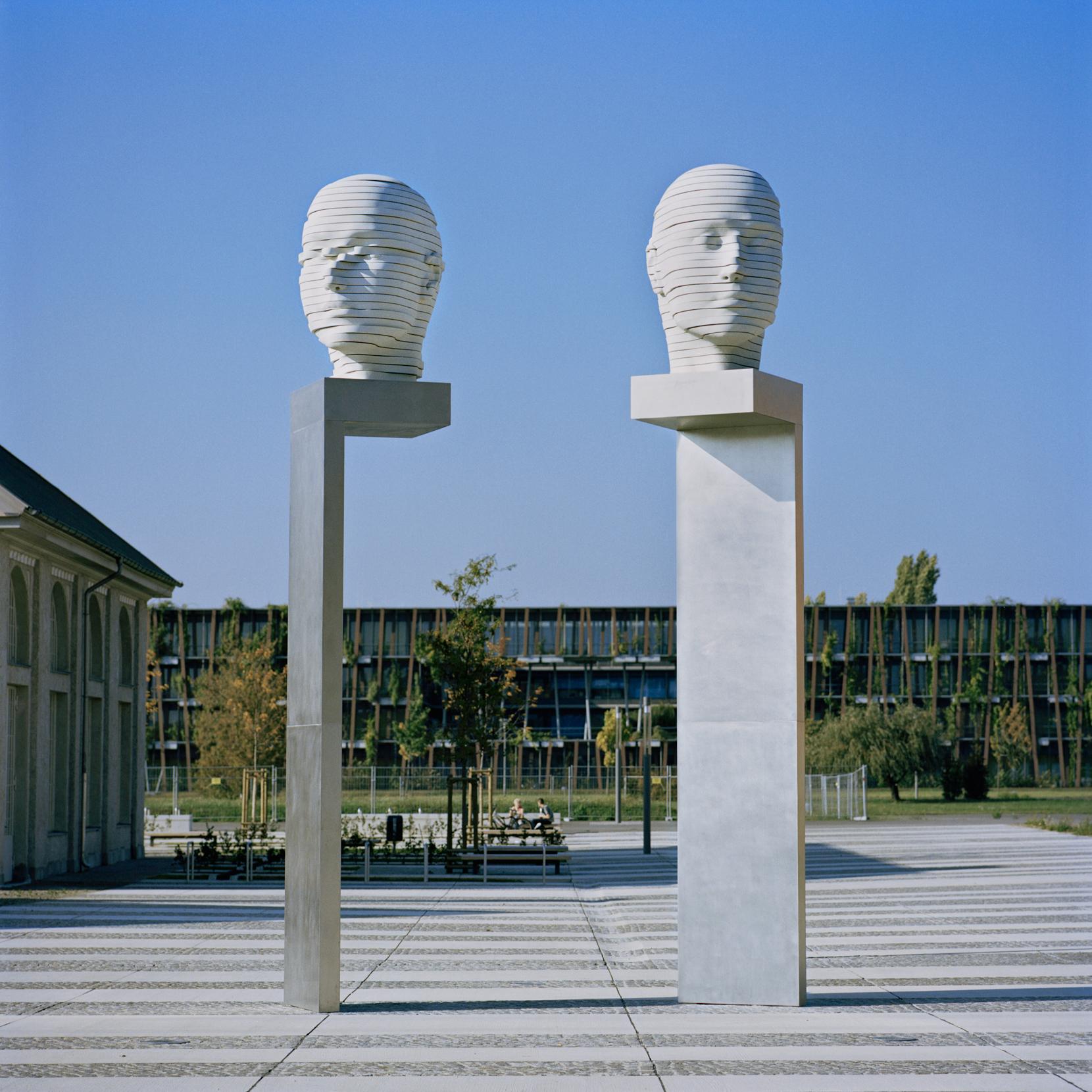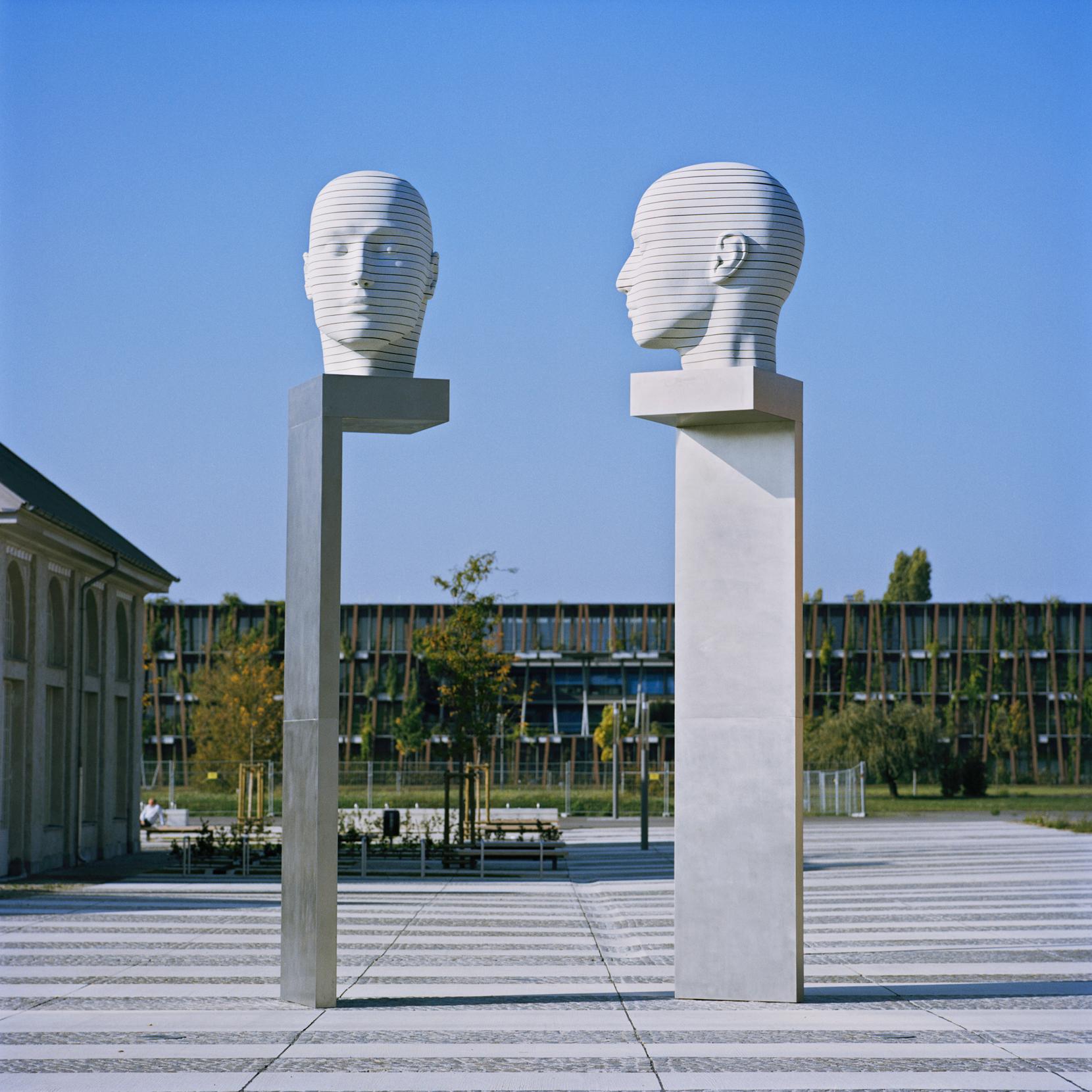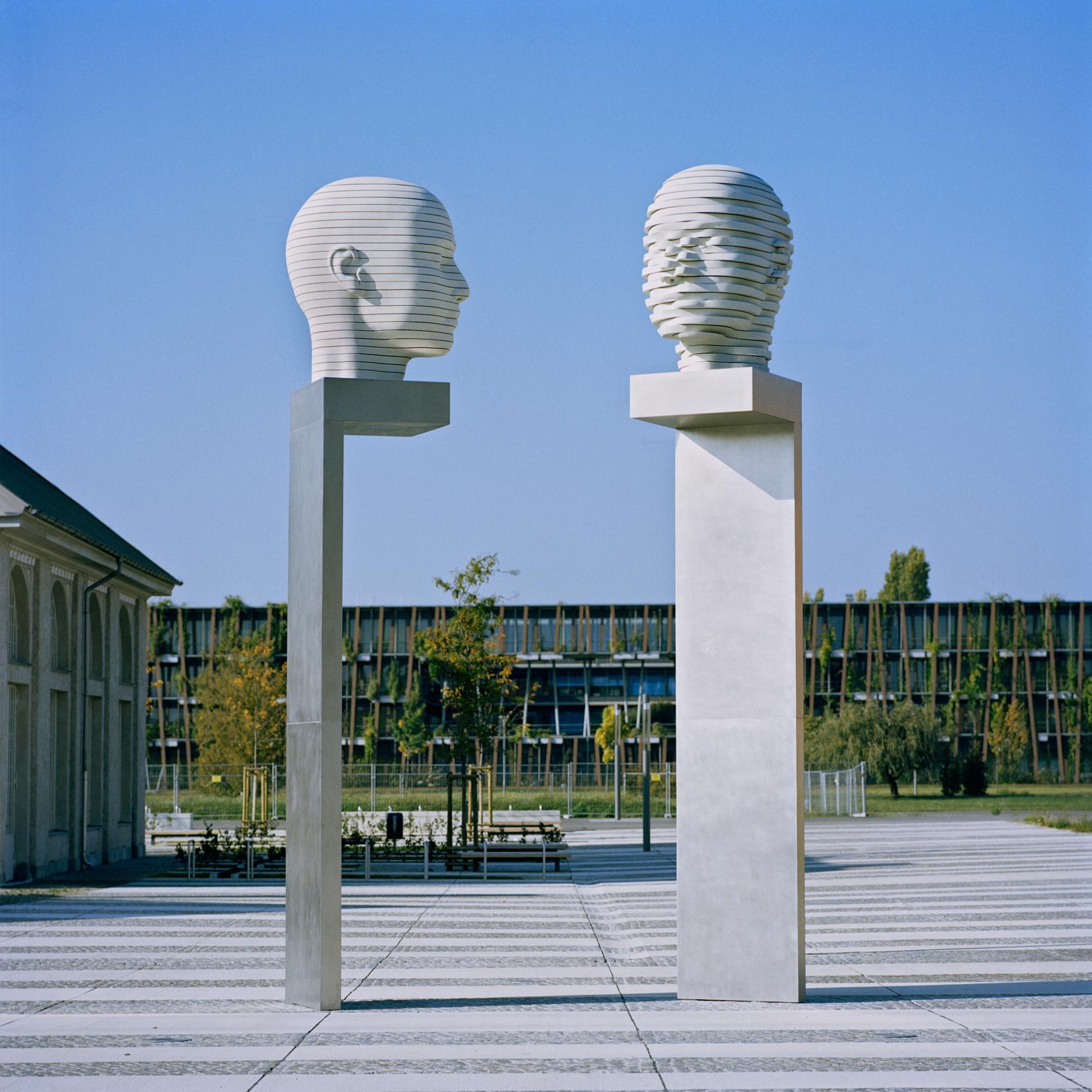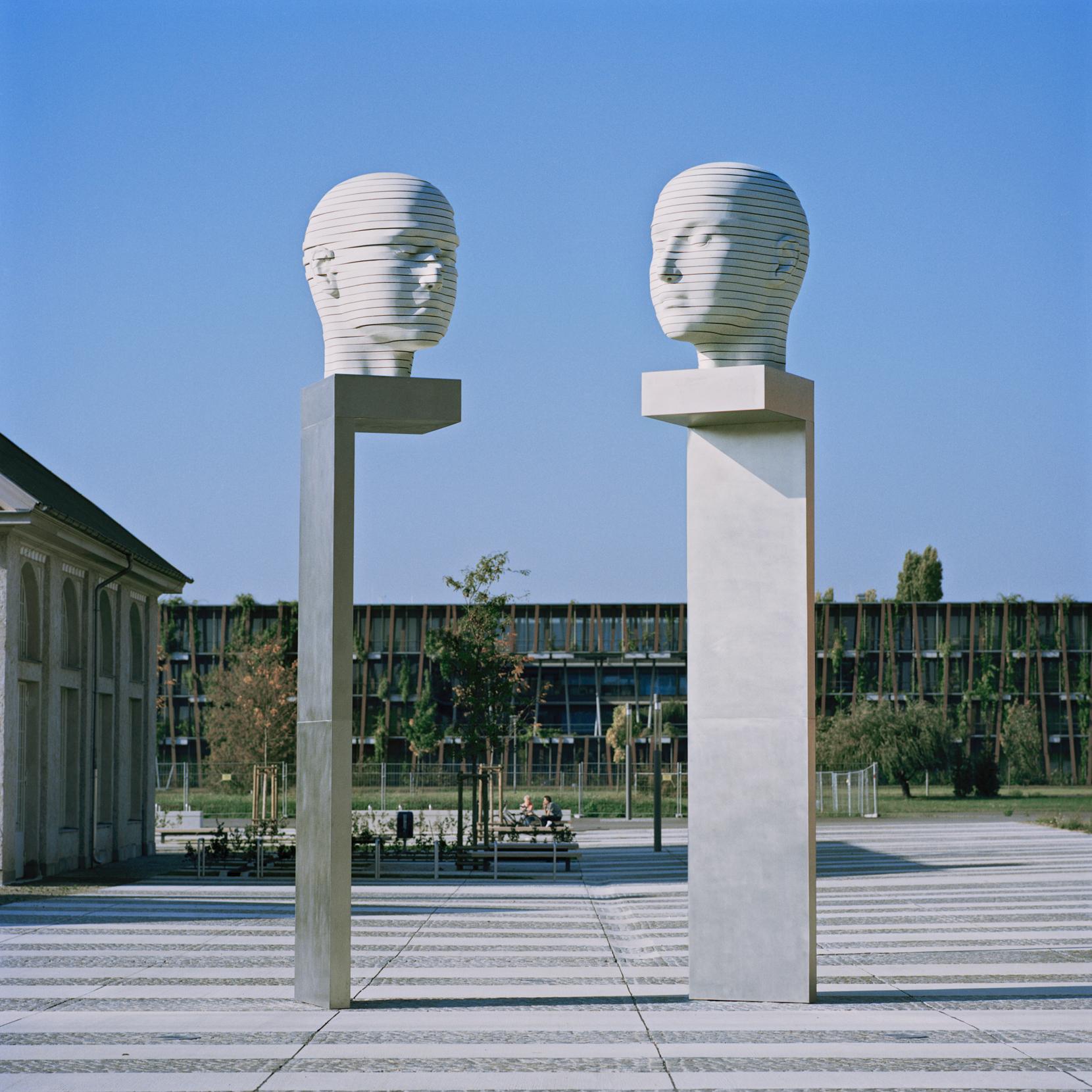Heads, shifting
Humboldt University Berlin-Adlershof, 2008
Client: State of Berlin
Reinforced plastic, electronic motors, computerised controls, steel
In co-operation with Margund Smolka
Photographs: Jens Komossa
Approaching Adlershof from Rudower Chaussee, one sees two identical androgynous heads, slightly set apart from the laboratories. The heads stand 6 metres high and appear to gaze over the square. They are moving. Very slowly they change their expression, their position in relation to one another, and thus their effect on the surroundings. Changes on the mostly impassive faces are caused by small, subtle movements – occasionally the form of each head dissolves, becoming a sculptural structure whose surface can only be seen as an abstract form which eventually returns to its original starting position. Due to the almost endless number of possible combinations within each head (and between the two heads), the sculpture continually takes on a new appearance. The heads were computer-designed and offer no clues as to gender or personality – they are generic.
The artwork takes into consideration the function of the university as well as the character of the setting in which the heads are located. Thought, research, synthesis, openness and the ability to change one's point of view are all essential qualities of a university, and are represented in the form of "heads, shifting". An analogy to communication is present in the diverse positions of the two heads. Whether facing away from each other in seemingly introverted meditative moods, or facing each other and taking reference from one another in movement or change, these heads illustrate conditions and processes which address the nature of relationships between people as well as refer to the processes of researching, discovering and learning.
Furthermore, the appearance of the heads opens up various associations (such as stratified rock layers, computerised tomographies, interference on television) and motivates discussion on the relationship between people and technology as well as on the progression from the general to the specific.
Whilst on the one hand the two heads allude to the Humboldt brothers statue, at the historic location of the Humboldt University on Unter den Linden, their effect is not, on the other hand, one of classical sculpture: they neither represent a particular person nor are static. They challenge the traditional intentions of such sculptures and playfully transfer them into the present. They stand here - androgynous faces with indefinite expressions, timeless representatives of humankind.


